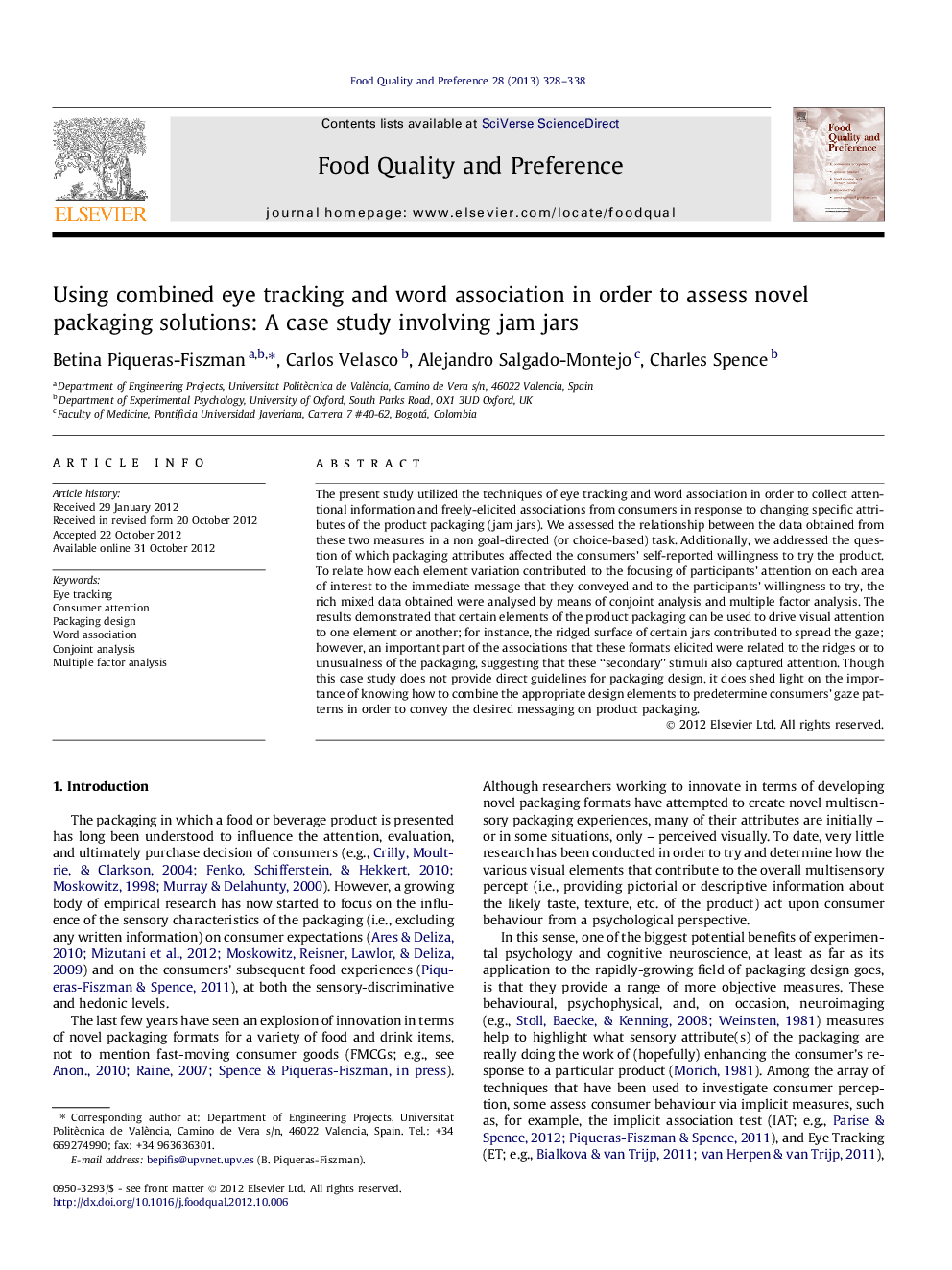| کد مقاله | کد نشریه | سال انتشار | مقاله انگلیسی | نسخه تمام متن |
|---|---|---|---|---|
| 4317384 | 1290591 | 2013 | 11 صفحه PDF | دانلود رایگان |

The present study utilized the techniques of eye tracking and word association in order to collect attentional information and freely-elicited associations from consumers in response to changing specific attributes of the product packaging (jam jars). We assessed the relationship between the data obtained from these two measures in a non goal-directed (or choice-based) task. Additionally, we addressed the question of which packaging attributes affected the consumers’ self-reported willingness to try the product. To relate how each element variation contributed to the focusing of participants’ attention on each area of interest to the immediate message that they conveyed and to the participants’ willingness to try, the rich mixed data obtained were analysed by means of conjoint analysis and multiple factor analysis. The results demonstrated that certain elements of the product packaging can be used to drive visual attention to one element or another; for instance, the ridged surface of certain jars contributed to spread the gaze; however, an important part of the associations that these formats elicited were related to the ridges or to unusualness of the packaging, suggesting that these “secondary” stimuli also captured attention. Though this case study does not provide direct guidelines for packaging design, it does shed light on the importance of knowing how to combine the appropriate design elements to predetermine consumers’ gaze patterns in order to convey the desired messaging on product packaging.
► Eye tracking and word association were used in a study about packaging.
► Conjoint analysis and MFA were used to interpret and relate attentional and textual data.
► The areas that captured more attention were the flavour label, photograph and the logo.
► These elements elicited the higher number of sensory and positive hedonic associations.
► A squared format and a ridged texture spread the attention from the centre of the packaging image.
Journal: Food Quality and Preference - Volume 28, Issue 1, April 2013, Pages 328–338